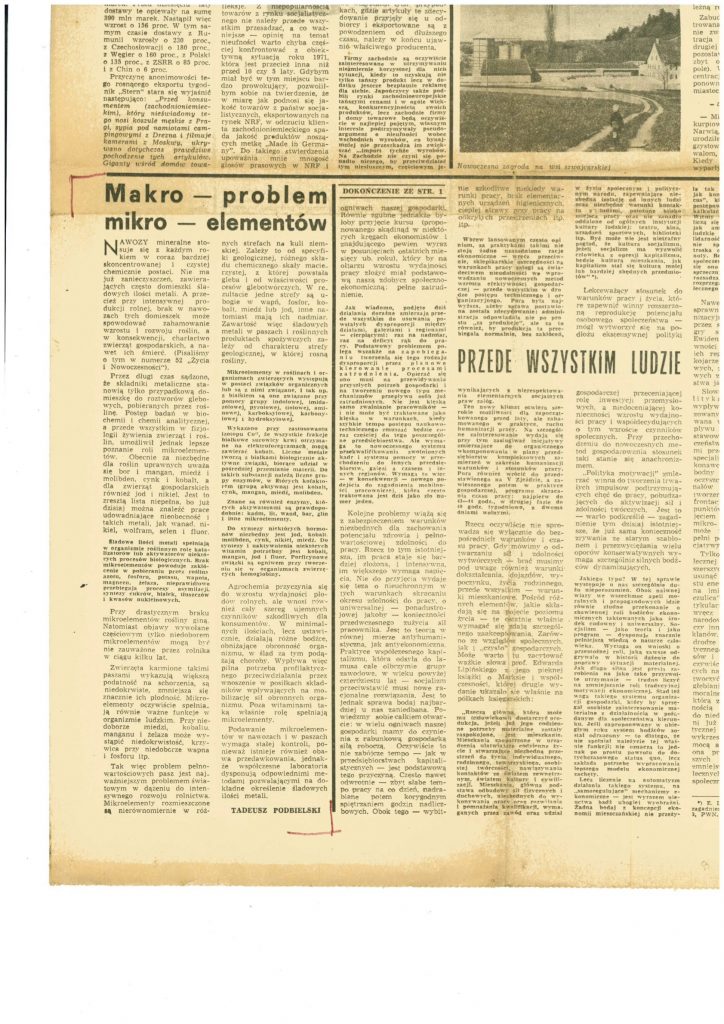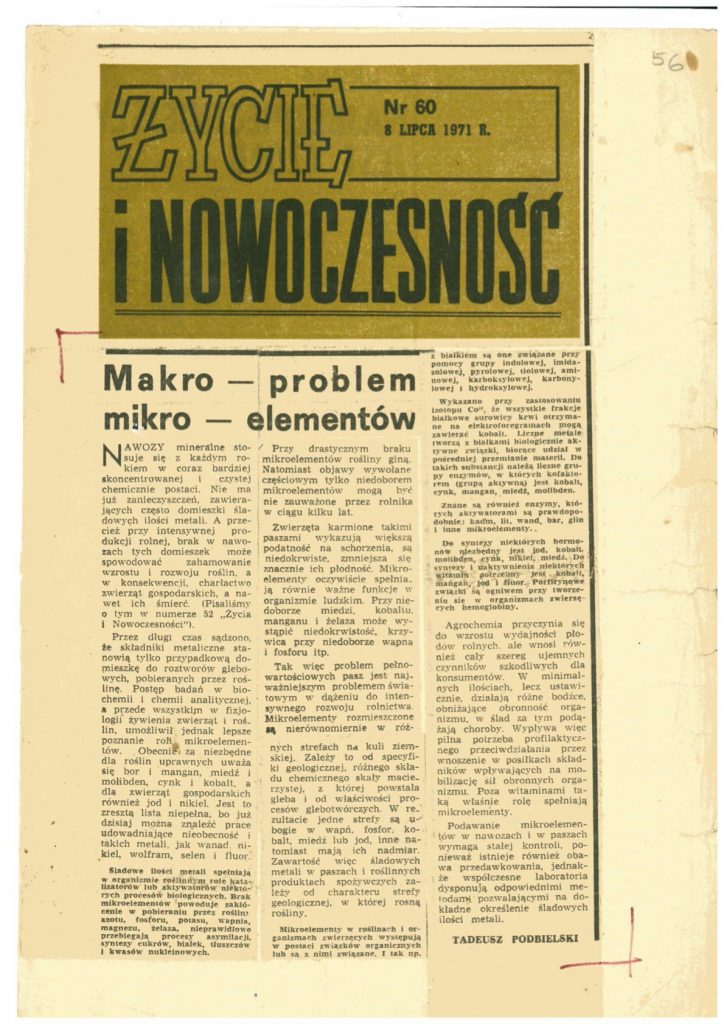Macro-problem of micro-elements, 1971.
LIFE AND MODERNITY
THE LIFE OF WARSAW
8 - 07-1971
Original article at the bottom.
Macro - the problem of micro - elements
Mineral fertilizers are used every year in an increasingly concentrated and chemically pure form. There are no longer impurities, often containing admixtures of trace metals. And yet, with intensive agricultural production, the lack of these admixtures in fertilizers can cause stunted growth and development of plants, and as a consequence: the charring of livestock and even their death (We wrote about this in issue 52 of "Life and Modernity").
For a long time, it was thought that metallic constituents were just an incidental admixture to soil solutions, taken up by the plant. However, advances in research in bio chemistry and analytical chemistry, and especially in the physiology of animal and plant nutrition, have made it possible to better understand the role of micronutrients. Today, boron and manganese, copper and molybdenum, zinc and cobalt are considered essential for crop plants, while iodine and nickel are also considered essential for livestock. This is, by the way, an incomplete list, because already today one can find works proving the absence and such metals as vanadium, nickel, tungsten, selenium and fluorine.
Trace amounts of metals act as catalysts or activators of certain biological processes in the plant body. Lack of micronutrients causes disruptions in the uptake of nitrogen, phosphorus, potassium, calcium, magnesium, iron by the plant, assimilation processes, synthesis of sugars proteins fats and nucleic acids go wrong.
With a drastic lack of micronutrients, plants die. In contrast, symptoms caused by only partial micronutrient deficiency may not be noticed by the farmer for several years.
Animals fed such feeds show greater susceptibility to disease, are anemic, and their fertility decreases significantly. Micro elements, of course, have equally important functions in the human body. When copper, cobalt. manganese and iron are not selected, anemia can occur, crohn's disease with calcium and phosphorus deficiency, etc.
Thus, the problem of full-value feed is the most important global problem in the pursuit of intensive agricultural development. Micronutrients are distributed evenly in different zones on the globe. This depends on geological peculiarities, the different chemical composition of the bedrock from which the soil was formed and the characteristics of soil-forming processes. As a result, some zones are deficient in calcium, phosphorus, cobalt, copper or iodine, while others have an excess of them. Thus, the content of trace metals in forage and plant food products depends on the nature of the geological zone in which the plants grow.
Micronutrients in plants and animal organisms occur in the form of organic compounds or are bound to them. Thus, for example, they are bound to proteins with indole, imidazole, pyrolyl, thiol, ami new, carboxyl, carbonyl hydroxyl groups.
It has been shown using the Co60 isotope that all protein fractions of blood serum obtained on electrophoregrams can contain cobalt. Numerous metals form biologically active compounds with proteins that are involved in indirect metabolism.
Such substances include numerous groups of enzymes in which the cofactor (active group) is cobalt, zinc, manganese, copper:, molybdenum. Also known are enzymes whose activators are likely to be cadmium, lithium, vanadium, barium, aluminum and other trace elements.
For the synthesis of some hormones, iodine, cobalt molybdenum, zinc, nickel, copper are required. Cobalt, manganese, iodine and fluorine are required for the synthesis and activation of some vitamins. Porphyrin compounds are a link in the formation of hemoglobin in animal organisms.
Agrochemicals contribute to increased crop yields, but they also bring a whole range of negative factors harmful to consumers. In minimal amounts, but constantly, various stimuli act, lowering the body's defenses, followed by diseases. Therefore, there is an urgent need for prophylactic counteraction by bringing ingredients in meals that affect the mobilization of the body's defensive forces. In addition to vitamins, micronutrients play this role:
The administration of micronutrients in fertilizers and feeds requires constant control, as there are also both wa overdose, but that modern laboratories have the appropriate methods to accurately determine trace amounts of metals.
TADEUSZ PODBIELSKI


